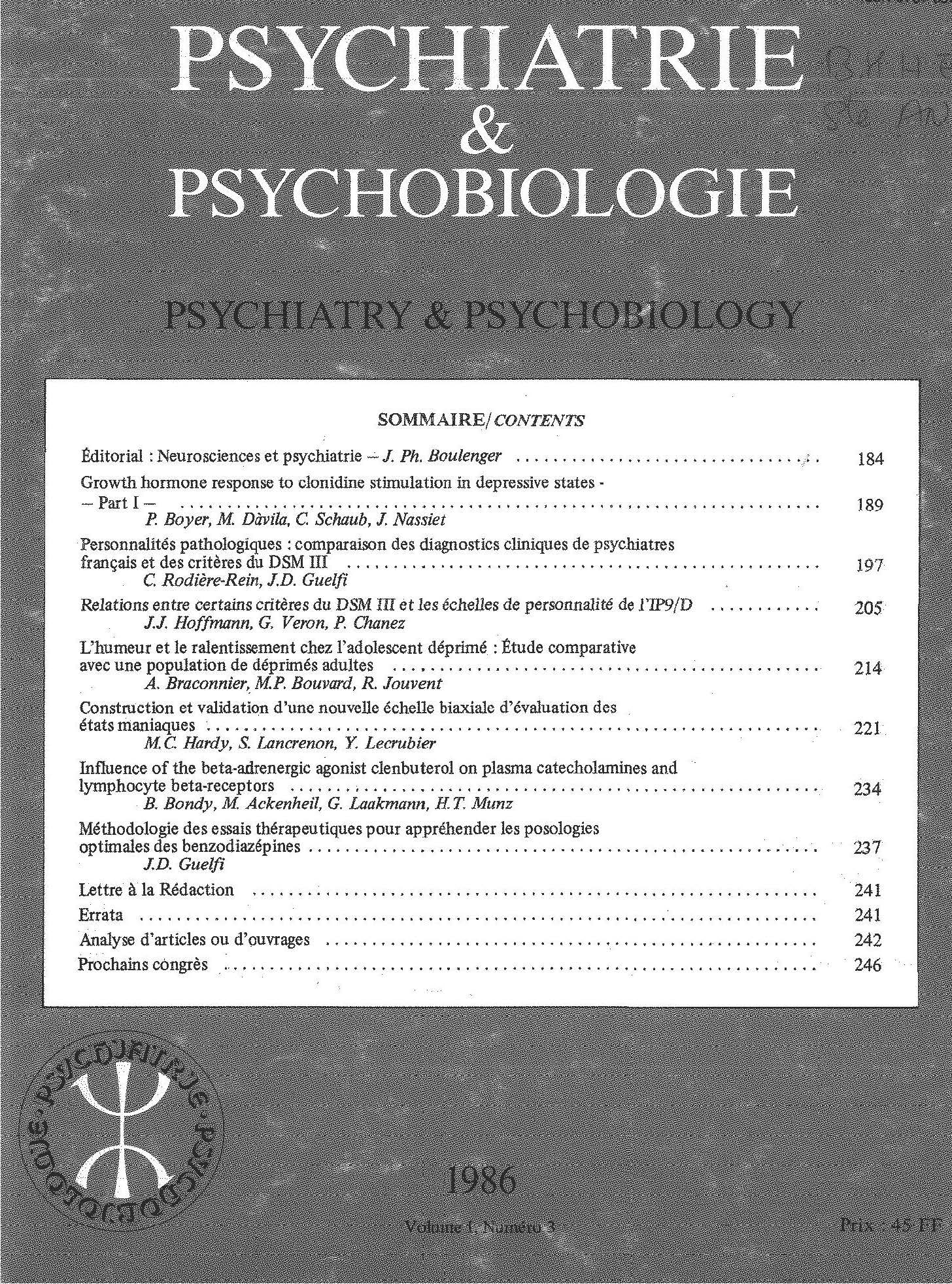Article contents
Mortalité des malades mentaux hospitalisés (lère partie)
Published online by Cambridge University Press: 28 April 2020
Résumé
Les statistiques sur les décès dans les hôpitaux psychiatriques existant actuellement en France ne permettent pas de calculer avec précision la mortalité des malades mentaux hospitalisés car on ne dispose pas du nombre de sujets pris en charge au cours d’une année.
Toutefois, à partir des durées de séjour, à l’aide de la méthode des personnes-années, on peut reconstituer une estimation satisfaisante de la population prise en charge, soit 96 750 patients. L’effectif théorique de population ainsi calculé est réparti selon la distribution observée par sexe et par âge des malades existants au 31 décembre.
Le nombre des décès observés par sexe et groupe d’âge est comparé aux décès que l’on aurait eus si les taux de mortalité de la population générale française de 1982 (milieu de l’année) avaient été appliqués aux effectifs de patients hospitalisés du même sexe et du même groupe d’âge. Il ressort de cette comparaison que la mortalité des malades hospitalisés est globalement trois fois plus élevée que celle de la population générale. Cette surmortalité est plus accentuée encore pour les groupes d’âges jeunes, surtout chez les femmes.
Summary
Currently available statistics on psychiatric in-patients in France do not supply enough information for exact estimation of mortality rates. Despite the recording of the number of deaths occuring in a given year in all psychiatric hospitals, the population hospitalized during that same year is not known.
The data only provide information about in-patients counted on prevalence day (31 December). The number of admissions per year which are followed by discharge or death is also known. Yet, for instance, the subject who is admitted and discharged three times during a given year counts as three admissions (and has only a single chance of dying).
The length of each stay is known, and has permitted the calculation of the number of days each patient was hospitalized, from admission to discharge or death. By adding up all the days during which each patient was a hospital resident and by dividing this total by 365, we obtained a number of person years. There were a total of 96,750 person-years, distributed as a function of age and sex of in-patients counted on prevalence day (31 December). In-patient distribution as a function of age on a single day can be considered as similar to that encountered any other day of the year.
The expected number of deaths was obtained by multiplying the age- and sex-specific rate for the French population in 1982 (the midpoint of the follow-up period), by the cohort's person-year contribution to that age and sex category. The standardized mortality ratio can be interpreted as the risk of dying relative to that presented by persons of the same age and sex in the general population. A standardized mortality ratio greater than I indicates higher risk.
Death rates are apparently higher among psychiatric in-patients than in the general population, with about three times the number of deaths expected on the basis of rates for the French population. This excess mortality is highest in the younger groups, especially among young females.
- Type
- Research Article
- Information
- Copyright
- Copyright © European Psychiatric Association 1987
References
Bibliographie/References
- 1
- Cited by



Comments
No Comments have been published for this article.